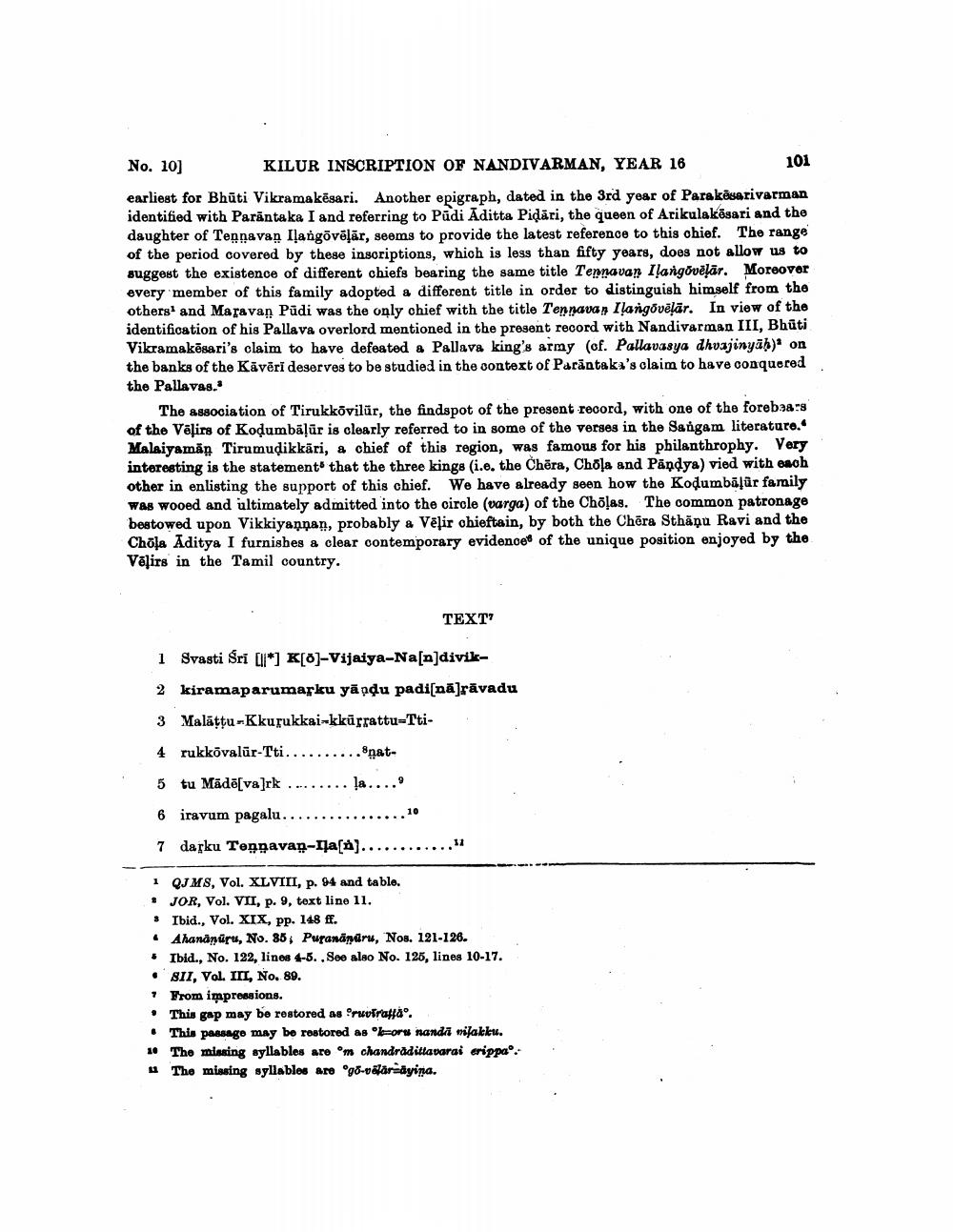________________
No. 10] KILUR INSCRIPTION OF NANDIVARMAN, YEAR 16
101 earliest for Bhūti Vikramakēsari. Another epigraph, dated in the 3rd year of Para kasarivarman identified with Parantaka I and referring to Padi Aditta Pidāri, the queen of Arikulakësari and the daughter of Tennavan Ilargāvēļār, seems to provide the latest reference to this chief. The range of the period covered by these inscriptions, which is less than fifty years, does not allow us to suggest the existence of different chiefs bearing the same title Tennavan Ilangovēļār. Moreover every member of this family adopted a different title in order to distinguish himself from the others and Maravan Pudi was the only chief with the title Tennava, Ilargovēļār. In view of the identification of his Pallava overlord mentioned in the present record with Nandivarman III, Bhūti Vikramakēsari's claim to have defeated a Pallava king's army (cf. Pallavasya dhuajinyāb)* on the banks of the Kāvēri deserves to be studied in the context of Parantaka's claim to have conquered the Pallavas.
The association of Tirukkovilūr, the findspot of the present record, with one of the foreb:38:8 of the Vēlirs of Kodumbālür is clearly referred to in some of the verses in the Sangam literature. Malaiyamán Tirumudikkäri, & chief of this region, was famous for his philanthrophy. Very interesting is the statement that the three kings (i.e. the Chēra, Chola and Pandya) vied with each other in enlisting the support of this chief. We have already seen how the Kodumbāļür family Was wooed and ultimately admitted into the circle (varga) of the Chõlas. The common patronage bestowed upon Vikkiyaņņan, probably a Vēļir chieftain, by both the Chēra Sthāņu Ravi and the Chola Aditya I furnishes & clear contemporary evidences of the unique position enjoyed by the Vajirs in the Tamil country.
TEXT7
1 Svasti Sri [ll*] K[0]-Vijaiya-Na[n]divik
2 kiramaparumafku yāndu padi[nā]rāvadu
3 Malāttu-Kkurukkai-kkūgrattu-Tti4 rukkovalūr-Tti..........nat5 tu Mādē[va]rk ......... la....' 6 iravum pagalu................ 7 dasku Tennavaş-Ila[i].........
1 QJMS, Vol. XLVIII, p. 94 and table. : JOR, Vol. VII, p. 9, text line 11. * Ibid., Vol. XIX, pp. 148 ff. • Ahanapüru, No. 85, Puranändru, Nos. 121-126. • Ibid., No. 132, lines 4-5..See slao No. 126, lines 10-17. • 811, Vol. III, No. 89. • From impressions. • This gap may be restored as rwolraffa. • This passage may be restored as oru nanda mifakku. 10 The missing syllables are om chandradillavarai erippao. u The missing syllables are 98-válar dyina.




